The Instruments: Invented Instruments
part of a series on instruments in avant-music
The type of instruments you see at a live performance of avant-music will likely fall into these broad categories:
“normal” instruments (that can be purchased from a manufacturer);
“prepared” instruments (a normal instrument that has been temporarily modified);
and “invented” instruments (unique, often one-of-a-kind instruments that bear little or no resemblance to normal instruments in appearance or sound).
Some performances don’t use instruments at all, but some other sound source (i.e. recorded sounds). The world of recorded music production has evolved over the years to the point that the recording studio itself is thought of as an instrument.
Back in the world of live music performance, the chances of seeing invented instruments being used, even at an avant-music event, are pretty small.
Recently, a collection of local instrument inventors was part of a day long special event at the San Francisco Museum of Modern Art. This was a unique opportunity to see and hear dozens of these instruments in use, and meet their makers.
The Instruments: Invented Instruments at SFMOMA 5 Sept 2024
This event was organized by Kathleen Maguire, the Public Programming and Exhibitions person at SFMOMA. She told me it all came together in about 6 weeks, after another planned event fell through. Her previous experience at San Francisco’s hands-on science museum, the Exploratorium, prepared her well for rounding up makers on short notice. At least 10 instrument inventors, along with their many inventions, were spread out on tables that completely lined the walls of the large gallery space at the museum.
One of the inventions included computer generated images to go with the sound. As a user watched a screen and manipulated the instrument with hand movements, the images created in real-time were also projected in large scale on the wall above.
With all these sights and sounds happening at once, it was easy to feel a bit overwhelmed. Focusing on an individual maker or instrument helped me overcome this.
I noticed that there was a lot of nice looking wood on display. No surprise there. It’s been the basis for building instruments forever. But it also took me back to one of my first experiences of seeing an invented instrument in live performance. This was the most simple instrument you can imagine: a piece of thin wood clamped to a table. That’s it!
When the inventor started playing that wood I could hardly believe my ears. The dynamic range alone was impressive, from harsh to soothing; melodic to dissonant. I had to buy the album, but I don’t recall if it was at this gallery performance or later at a record store. Here it is:
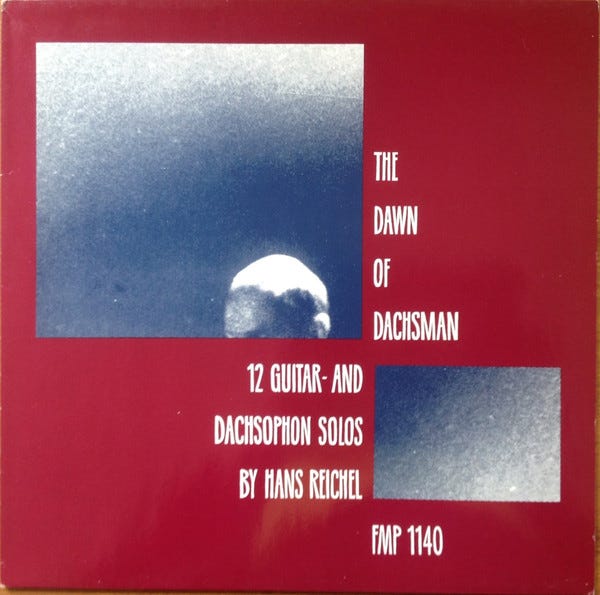
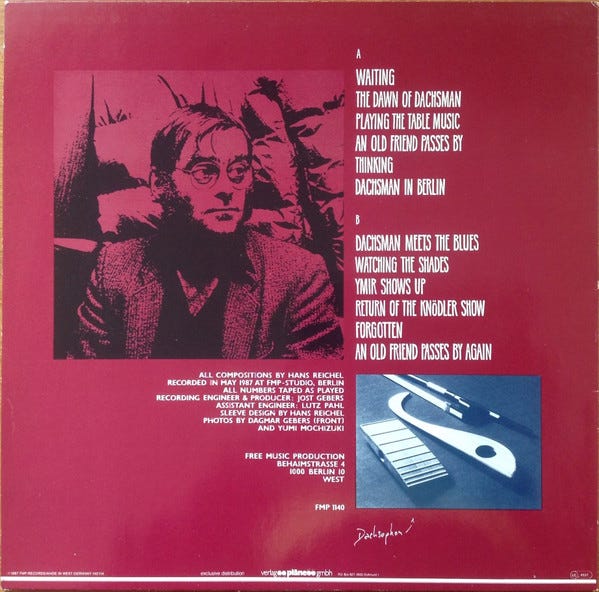
These were the early days of Hans Reichel playing his Dachsophon (also called Daxophone). He kept refining it, and his instrument would catch on. There are daxophone players all over the world today.
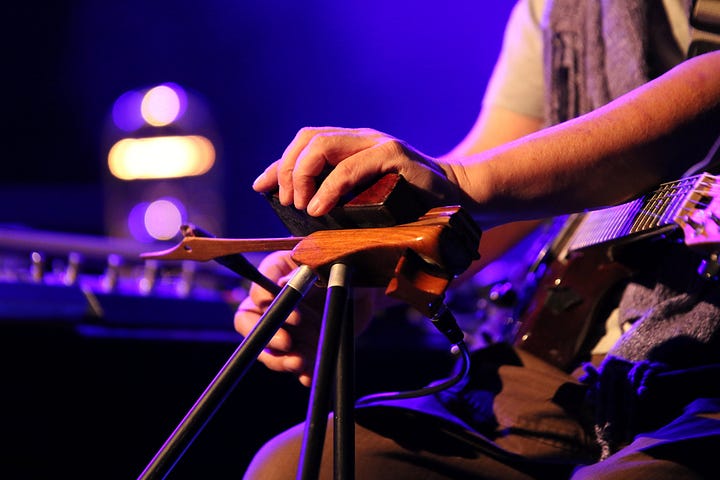
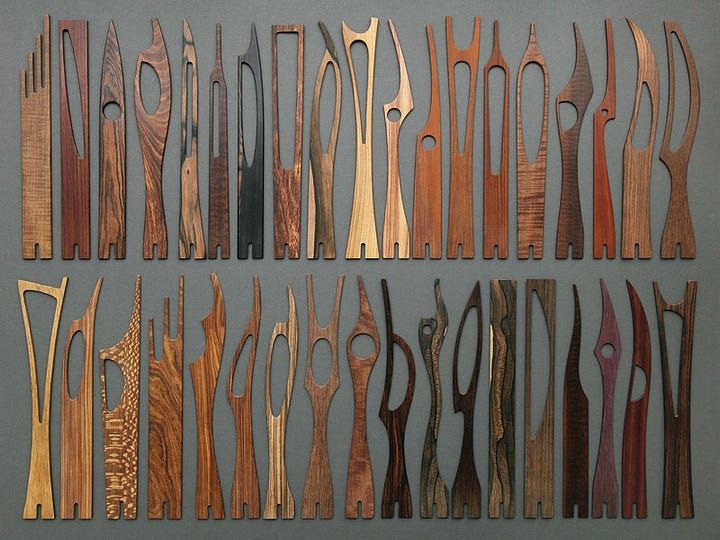
Back at SFMOMA, amongst all the nice looking wood, there was a huge variety of instruments on display ranging from computer controlled to balloon and water controlled sound makers. Everything was hands-on for everyone in the crowd that kept getting larger the longer I was there. If you couldn’t figure out how to get a sound from the unique object in front of you, chances are the kid standing next to you waiting for their crack at it could.
As I waited my turn at one table, I saw an instrument that reminded me of an old friend who also built instruments. After staring at it for a long time, I finally asked the maker, “Did you know Tom Nunn?”
Tom was one of the many musicians I became friends with back when I was producing live improvised music events. He was a beautiful soul with a wicked sense of humor. And he built and played his own instruments.
I asked Tom to make one for me. I was planning a “Battle of the Improv Bands” event and I needed a trophy to award to the winner. That was probably the only instructions I gave Tom, and he happily agreed to do it.
This event was some of the most fun I had promoting a show. I took the bands to a radio interview and we hyped it up just like any World Wrestling Federation “WrestleMania” event. I even got well known improvisor Willy Winant to don a zebra striped referee shirt to host the affair … and keep the bands following the rules.
I went to pick up the trophy prior to the event, and soon learned about Tom’s wicked sense of humor.
Yes folks, the trophy is an instrument … and a phallus. Tom interpreted the whole “Battle” theme as a satirical act of machismo, which of course it was. AND SO MUCH MORE. Thank you Tom. You are missed.
The maker at SFMOMA heard my question about Tom and responded with a big smile. Yes, she knew Tom well.
Wandering from maker table to maker table, I found that standing near the instrument was usually good enough to hear its unique sound against the background of dissonance that streamed throughout the large gallery. Sometimes I had to look for the small amplifier that every maker seemed to have in order for my brain to connect what I was seeing to what I was hearing. Several times I caught myself drifting to the middle of the space just to bathe in the glorious din that immersed me.
At the top of the hour, the din came to a halt. It was time for each maker to show us what they’ve got. This was a bit jarring for me after experiencing about an hour of ecstatic din. When some of the instruments were played individually, they sounded puny; like a noise maker you’d pull out on New Years Eve. I had to remind myself that this was the demonstration part of the event.
The demos didn’t take long, and as soon as it was over the din slowly picked up again. The room was filled with people now. Every one of them had a huge grin on their face.


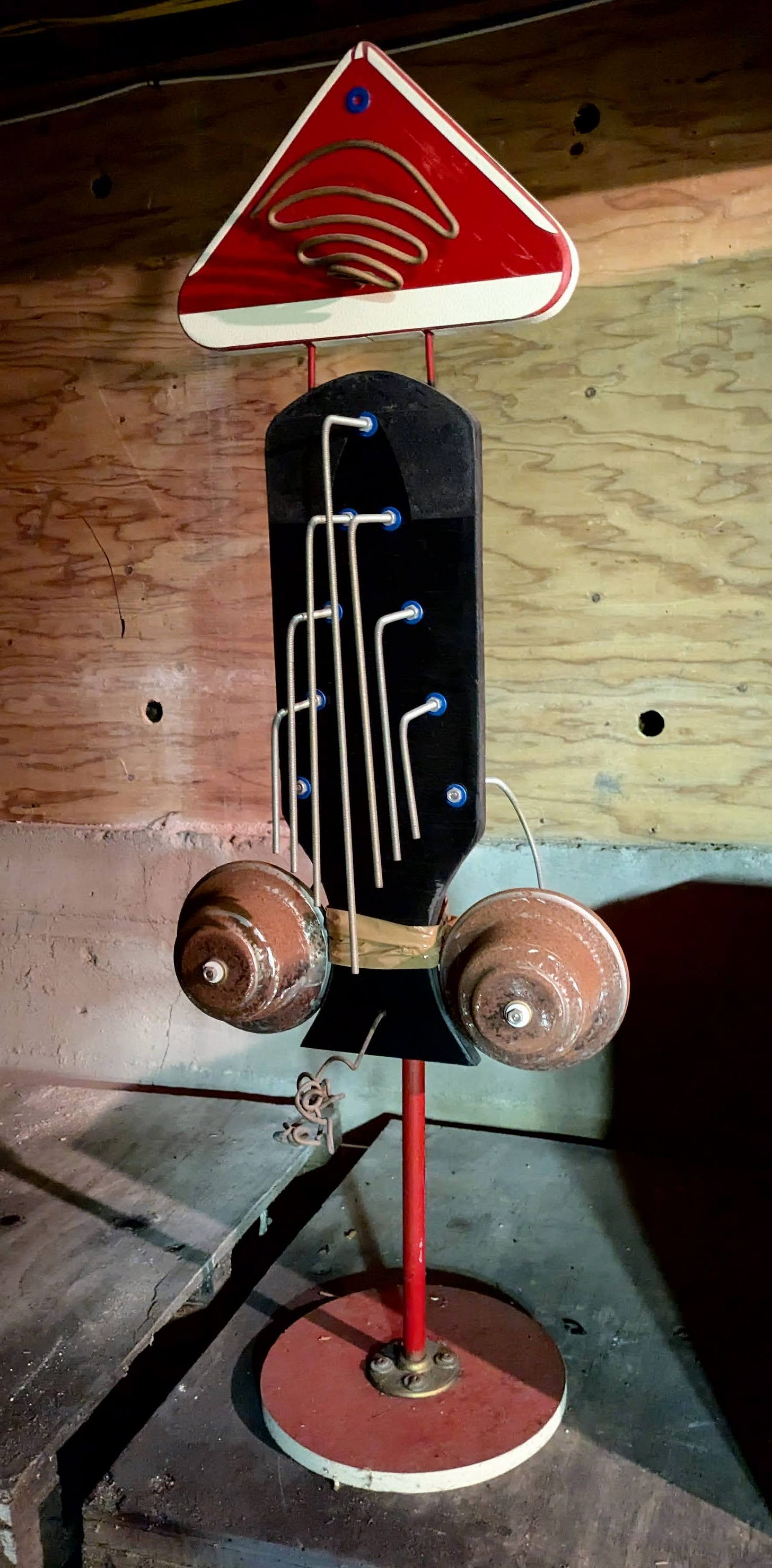

A real good time at SFMOMA that day hearing all the instruments including my friend and avant garde music mentor Kyrs Bobrowski’s Gliss Glass.
Thanks for a great article and recap of the event.
It’s so great to hear how this was… our family went to see the exhibit, and absolutely loved it! It was so interesting to see, and it was really nice to see the museum packed again.